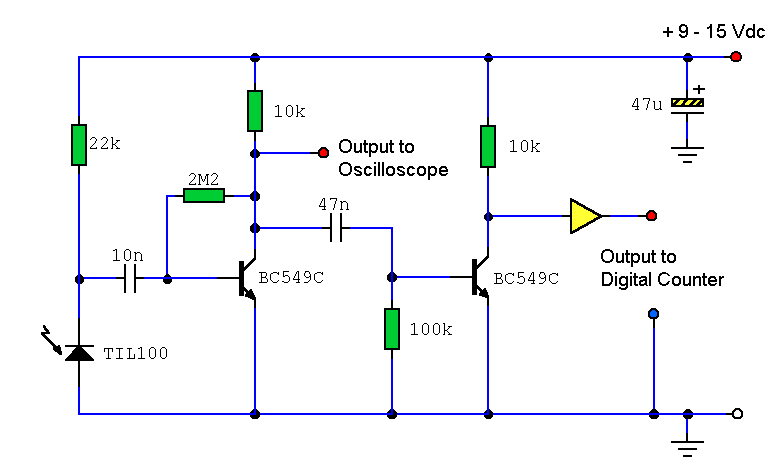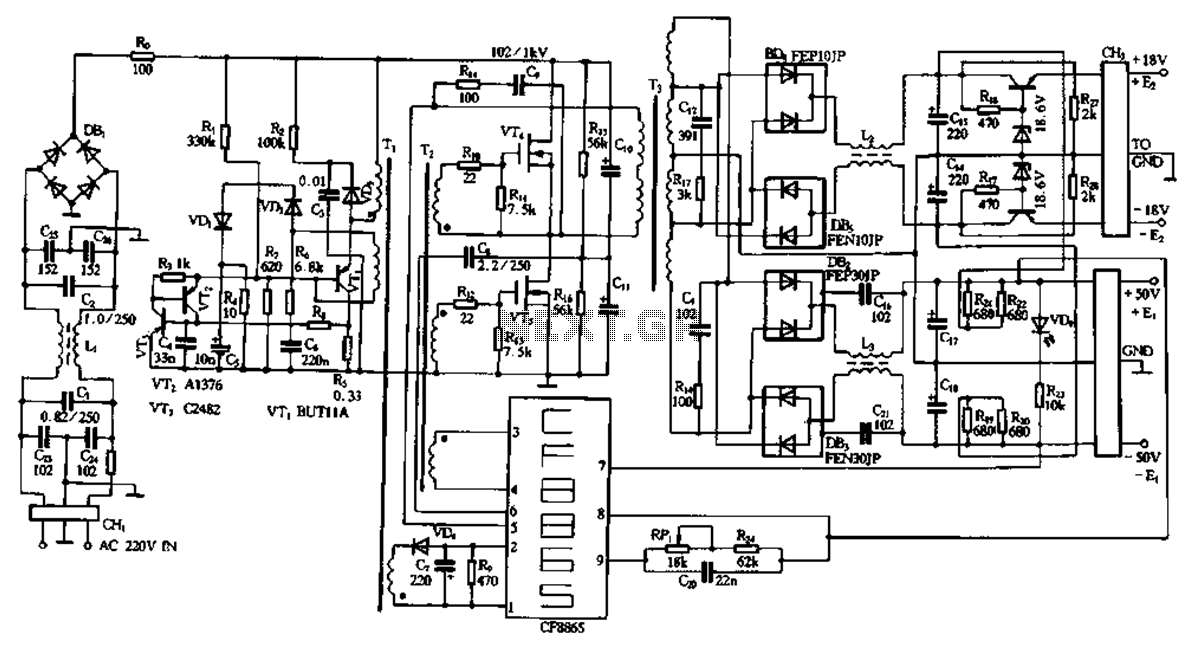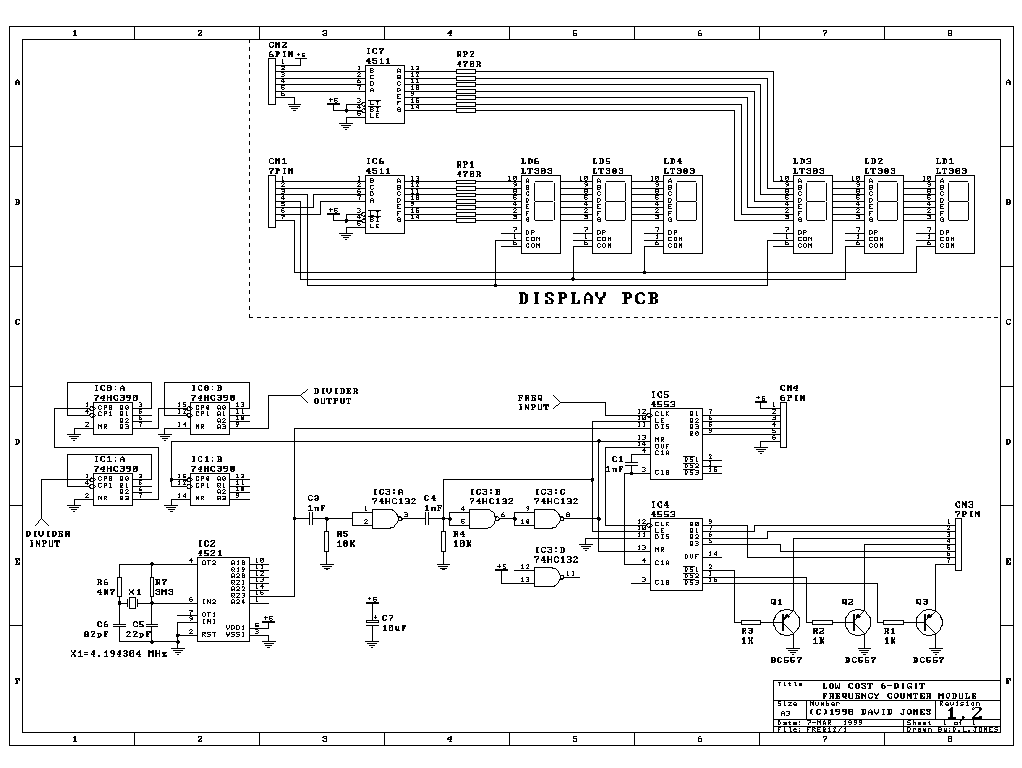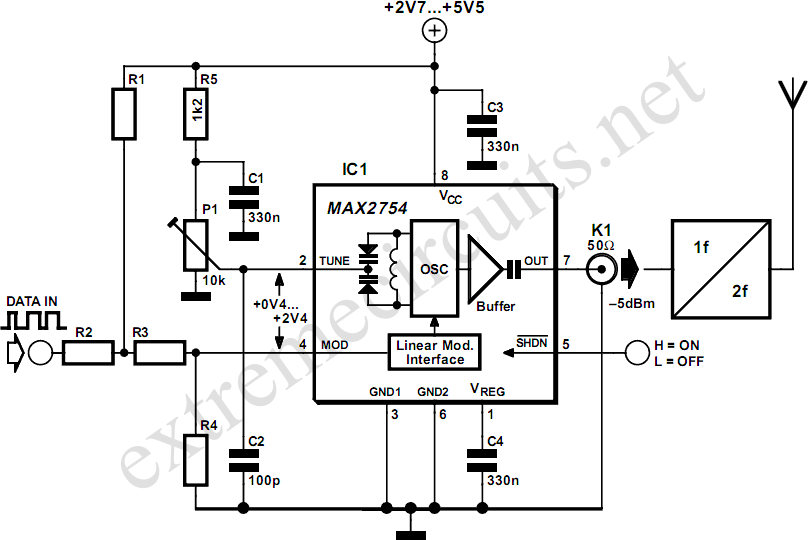
Basics 06 Mod
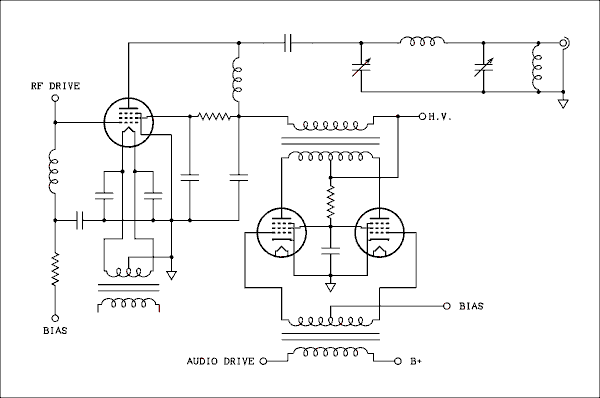
The earliest form of radio communication was radio telegraphy, which differed from wired telegraphy. A telegraph key activates the transmitter when closed and deactivates it when open. The operator sends messages using a series of long and short signals, represented as dashes and dots, which are then interpreted by the recipient who knows the code. The exact year when radios began to transmit voice is unclear, but the method used was amplitude modulation (AM). Early transmitters likely produced both frequency modulation (FM) and AM, although FM had not yet been invented and there was no method to detect it. Thus, the focus will be on AM. An unmodulated radio transmitter emits a steady single frequency with constant amplitude. When amplitude modulation occurs, the transmitter's output voltage varies in accordance with the modulating voltage. The unmodulated output is referred to as the carrier, a term that originated because early radio engineers believed the steady RF signal carried audio through the ether. For example, when transmitting a steady sine wave, it may not be interesting to listeners, but it is transmitted nonetheless. The top waveform in the referenced figure illustrates an unmodulated carrier wave, followed by an audio sine wave, and finally the carrier modulated by the audio wave. The audio wave is added to 1 to keep it above the axis and subsequently multiplies the carrier wave. To delve further into the AM signal, it is important to note that there is no difference in the theoretical operation of a mixer and a modulator; both can utilize the same circuit at low power. A mixer generates sum and difference frequencies, which is also the function of a modulator. At power levels ranging from approximately 5 watts to 5000 watts, modulation occurs in the final, highest power stage. A specially designed transformer couples the audio from an audio power amplifier into the plate circuit of the RF power amplifier. When there is no audio signal, the DC voltage at the plate of the RF tube equals the high voltage (HV). Under 100% modulation, the plate voltage fluctuates from 0 to twice the HV value, causing the RF voltage to vary from 0 to twice the no-modulation value. If the RF tube is a pentode, the screen grid must also be modulated alongside the plate. It is advised not to follow this plan for building an AM transmitter, as it is intended solely to illustrate the principle rather than serve as a construction guide. For instance, if one wishes to modulate a 100 kHz carrier with a 6 kHz audio wave, the modulator will transmit the original frequencies while generating two new frequencies at 94 kHz and 106 kHz. At 100% modulation, as depicted in the referenced figure, these new frequencies will have half the amplitude of the carrier. These new frequencies are termed sidebands. While the 6 kHz audio may be present, the tuned circuits in the antenna matching network, the antenna itself, and the propagation characteristics of radio waves will prevent distant receivers from picking up this frequency, thus it will be disregarded. Sidebands are the new frequencies created on either side of the carrier wave. For example, a radio station operating at 650 kHz and transmitting an audio bandwidth of 50 Hz to 10,000 Hz will have a carrier frequency of 650,000 Hz, with an upper sideband extending from 650,050 Hz to 660,000 Hz, and a lower sideband extending from 649,950 Hz to 640,000 Hz.
In the context of an amplitude modulation (AM) transmitter design, the key components include the RF power amplifier, modulator, and audio power amplifier. The RF power amplifier is responsible for generating the carrier wave, while the modulator introduces the audio signal to achieve modulation. The modulation process typically employs a transformer to couple the audio signal into the RF amplifier's plate circuit, ensuring that the audio frequencies are effectively superimposed onto the carrier wave.
The modulation depth is crucial, as it determines the extent of variation in the RF output voltage in response to the audio input. At 100% modulation, the output voltage swings between 0 and twice the high voltage, thereby creating sidebands that carry the audio information. The sidebands are critical for transmission, as they contain the actual audio content that is intended for reception.
In practical applications, the design must account for the frequency response of the audio signal and the characteristics of the RF amplifier to ensure efficient transmission. Additionally, the antenna matching network must be optimized to allow for effective radiation of the modulated signal while minimizing losses. The bandwidth of the transmitted signal is determined by the modulation frequency and the desired audio quality, which must be carefully balanced to meet regulatory standards for radio transmission.
Overall, the principles of AM transmission highlight the interplay between the carrier wave and the modulating audio signal, emphasizing the importance of both frequency and amplitude in successful radio communication.The very first form of radio communication was radio telegraphy, as opposed to wired telegraphy. The telegraph key turns the transmitter on when it is closed and off when open. The operator taps out the message in a long and short, dashes and dots, code and the person on the other end who knows the code reads the dots and dashes and translates the m into letters and then to words. I don`t know what year radios began to talk but the method was amplitude modulation (AM). Those early transmitters probably produced as much frequency modulation (FM) as they did AM but FM hadn`t been invented yet and there was no known way to detect it. So we will begin with AM. An unmodulated radio transmitter puts out a steady single frequency of constant amplitude. When it is amplitude modulated the voltage of the transmitter output is varied according to the modulating voltage.
The unmodulated transmitter output is called the carrier. As we will see when we study Single Sideband (SSB) this is a total misnomer. But never mind that, it`s universally called the carrier and that`s what we will call it. It was named that because the early radio engineers thought the steady RF signal carried the audio through the ether. Suppose we want to transmit a steady sine wave. That`s not very interesting to anyone who might be listening but who cares. We`re going to transmit it anyhow. The top wave in Figure 6. 1 shows an unmodulated carrier wave at the top, an audio sine wave second, and at the bottom, the carrier modulated by the audio wave.
This looks pretty straight forward. The audio wave is added to 1 to make it all above the axis and then it multiplies the carrier wave. If I didn`t need to go on to explain single sideband I could just leave it at that. But I am going on to SSB so we need to dig deeper into the AM signal. There is no difference between the theoretical operation of a mixer and a modulator. At low power the same circuit can be used for either one. As you will remember from your study of the All American 5 or the Simple Superhet a mixer creates sum and difference frequencies. So does a modulator. At power levels from about 5 watts to 5000 watts the modulation is done in the last, highest power, stage.
A specially made transformer couples the audio from an audio power amplifier into the plate circuit of the RF power amplifier as shown in Figure 6. 2 below. When there is no audio signal the DC voltage at the plate of the RF tube is equal to the HV (high voltage).
When audio is applied at 100% modulation the plate voltage varies from 0 to twice the HV value. This causes the RF voltage to vary from 0 to twice the no modulation value. If the RF tube is a pentode the screen grid has to be modulated along with the plate. If you want to build an AM transmitter don`t follow this plan. I made it up as I went along. It is meant to illustrate the principle not to be a construction project. Suppose we want to modulate a 100 kc carrier with a 6 kc audio wave. The modulator will pass the original frequencies through but will create two new frequencies, 94 kc and 106 kc. For 100 percent modulation, the condition shown in Figure 6. 1, the new frequencies will be one half the amplitude of the carrier. These new frequencies are called sidebands. Although the audio, 6 kc, may be present, the tuned circuits in the antenna matching network, the antenna its self, and the nature of propagation of radio waves will not allow the 6 kc audio to be picked up by a distant receiver so we will neglect that frequency from now on.
Sidebands are the new frequencies that are created on either side of the carrier wave. For example a radio station operating on 650 kc and transmitting an audio bandwidth of 50 cycles to 10 thousand cycles will have the carrier at 650, 000 cycles and an upper sideband extending from 650, 050 to 660, 000 cycles, and a lower sideband extending from 649, 950 to 640, 000 cycles. It should b 🔗 External reference
In the context of an amplitude modulation (AM) transmitter design, the key components include the RF power amplifier, modulator, and audio power amplifier. The RF power amplifier is responsible for generating the carrier wave, while the modulator introduces the audio signal to achieve modulation. The modulation process typically employs a transformer to couple the audio signal into the RF amplifier's plate circuit, ensuring that the audio frequencies are effectively superimposed onto the carrier wave.
The modulation depth is crucial, as it determines the extent of variation in the RF output voltage in response to the audio input. At 100% modulation, the output voltage swings between 0 and twice the high voltage, thereby creating sidebands that carry the audio information. The sidebands are critical for transmission, as they contain the actual audio content that is intended for reception.
In practical applications, the design must account for the frequency response of the audio signal and the characteristics of the RF amplifier to ensure efficient transmission. Additionally, the antenna matching network must be optimized to allow for effective radiation of the modulated signal while minimizing losses. The bandwidth of the transmitted signal is determined by the modulation frequency and the desired audio quality, which must be carefully balanced to meet regulatory standards for radio transmission.
Overall, the principles of AM transmission highlight the interplay between the carrier wave and the modulating audio signal, emphasizing the importance of both frequency and amplitude in successful radio communication.The very first form of radio communication was radio telegraphy, as opposed to wired telegraphy. The telegraph key turns the transmitter on when it is closed and off when open. The operator taps out the message in a long and short, dashes and dots, code and the person on the other end who knows the code reads the dots and dashes and translates the m into letters and then to words. I don`t know what year radios began to talk but the method was amplitude modulation (AM). Those early transmitters probably produced as much frequency modulation (FM) as they did AM but FM hadn`t been invented yet and there was no known way to detect it. So we will begin with AM. An unmodulated radio transmitter puts out a steady single frequency of constant amplitude. When it is amplitude modulated the voltage of the transmitter output is varied according to the modulating voltage.
The unmodulated transmitter output is called the carrier. As we will see when we study Single Sideband (SSB) this is a total misnomer. But never mind that, it`s universally called the carrier and that`s what we will call it. It was named that because the early radio engineers thought the steady RF signal carried the audio through the ether. Suppose we want to transmit a steady sine wave. That`s not very interesting to anyone who might be listening but who cares. We`re going to transmit it anyhow. The top wave in Figure 6. 1 shows an unmodulated carrier wave at the top, an audio sine wave second, and at the bottom, the carrier modulated by the audio wave.
This looks pretty straight forward. The audio wave is added to 1 to make it all above the axis and then it multiplies the carrier wave. If I didn`t need to go on to explain single sideband I could just leave it at that. But I am going on to SSB so we need to dig deeper into the AM signal. There is no difference between the theoretical operation of a mixer and a modulator. At low power the same circuit can be used for either one. As you will remember from your study of the All American 5 or the Simple Superhet a mixer creates sum and difference frequencies. So does a modulator. At power levels from about 5 watts to 5000 watts the modulation is done in the last, highest power, stage.
A specially made transformer couples the audio from an audio power amplifier into the plate circuit of the RF power amplifier as shown in Figure 6. 2 below. When there is no audio signal the DC voltage at the plate of the RF tube is equal to the HV (high voltage).
When audio is applied at 100% modulation the plate voltage varies from 0 to twice the HV value. This causes the RF voltage to vary from 0 to twice the no modulation value. If the RF tube is a pentode the screen grid has to be modulated along with the plate. If you want to build an AM transmitter don`t follow this plan. I made it up as I went along. It is meant to illustrate the principle not to be a construction project. Suppose we want to modulate a 100 kc carrier with a 6 kc audio wave. The modulator will pass the original frequencies through but will create two new frequencies, 94 kc and 106 kc. For 100 percent modulation, the condition shown in Figure 6. 1, the new frequencies will be one half the amplitude of the carrier. These new frequencies are called sidebands. Although the audio, 6 kc, may be present, the tuned circuits in the antenna matching network, the antenna its self, and the nature of propagation of radio waves will not allow the 6 kc audio to be picked up by a distant receiver so we will neglect that frequency from now on.
Sidebands are the new frequencies that are created on either side of the carrier wave. For example a radio station operating on 650 kc and transmitting an audio bandwidth of 50 cycles to 10 thousand cycles will have the carrier at 650, 000 cycles and an upper sideband extending from 650, 050 to 660, 000 cycles, and a lower sideband extending from 649, 950 to 640, 000 cycles. It should b 🔗 External reference
